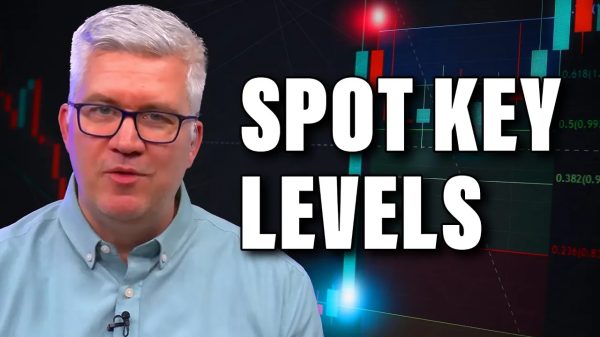Break of Structure: Navigating Market Shifts with Insight
The foreign exchange market is a dynamic battlefield where traders are constantly interpreting the ebbs and flows of price action. Central to their strategic arsenal is technical analysis, a framework within which the concept of the break of structure (BOS) is a critical element.
Key takeaways
A break of structure in Forex trading refers to a significant price movement that alters the established trend or range pattern. To identify a break of structure in Forex trading, look for price movements that breach established support or resistance levels. The Forex market is crucial for global trade, determining exchange rates, providing liquidity, and facilitating cross-border investment and economic stability.It provides an insightful look into potential market trend reversals, allowing traders to anticipate and react to shifts in market momentum.
The foundation of technical analysis is built on understanding market psychology, which is often reflected in chart patterns and price movements.
The role of BOS
A break of structure isn’t just a random fluctuation in price; it is a significant event that indicates a potential shift from the current trend, hinting at either trend continuation or reversal.
To identify a BOS, one must first understand the role of support and resistance levels. These levels represent psychological price points where the market has historically shown a propensity to halt and reverse or, conversely, to break through and accelerate.
When a price breaks through a trendline, which has been containing the price action, this is known as a trendline break. If this break coincides with the price surpassing a swing high in a downtrend, or a swing low in an uptrend, the BOS is confirmed. It signifies that the balance of power is shifting, and a potential trend reversal is imminent.
However, a BOS, on its own, might not be enough to warrant a trade. Experienced traders often seek a retest of the broken level and seek confirmation that the market respects this new support or resistance level – a practice known in trading circles as ‘retest and confirmation.’ A successful retest increases the likelihood that the BOS is genuine and that the market is preparing to move in the direction of the break.
Price breakout is another phenomenon closely related to BOS. When price action breaks out of a consolidation pattern, such as a triangle or a range, it signals that the market has decided on its next direction. A breakout after a BOS lends additional credence to the likelihood of a trend continuation or reversal.
Foreign exchange market
In order to better understand the role of break of structure, it is vital to gather more information about the Forex market.
The foreign exchange market, or Forex, is a global decentralized or over-the-counter (OTC) market for the trading of currencies. This financial market is the largest and most liquid in the world, and it operates 24 hours a day, five days a week. Here are some interesting facts about the Forex market:
Enormous trading volume
The Forex market is colossal in terms of trading volume. According to the 2019 Triennial Central Bank Survey coordinated by the Bank for International Settlements, the average daily turnover was approximately $6.6 trillion. This figure dwarfs the stock market, making Forex the largest financial market in the world.
24-hour market
Unlike stock markets, which have set hours, the Forex market is open 24 hours a day during weekdays. This is because it’s not tied to any single physical location; trades are conducted electronically around the world. This allows traders from various time zones to participate in trading during their normal business hours.
Currency pairs
Forex trading involves currency pairs, which are categorized as majors, minors, and exotics. The most traded currency pair is the EUR/USD, which represents the Euro and the US Dollar. Major pairs involve the USD and are the most traded, while minors are less frequently traded and exotics involve currencies from emerging or smaller economies.
Driven by global events
The Forex market is significantly influenced by global events. Economic data releases, central bank announcements, political events, and even environmental factors can lead to currency fluctuations. Traders must keep abreast of global news and economic calendars to predict potential market movements.
Leverage and other interesting facts
The Forex market is known for the high leverage offered by brokers. Leverage allows traders to control a large position with a relatively small amount of capital. While this can lead to large profits, it also increases the risk of substantial losses, making risk management crucial in Forex trading.
The impact of technology
Technological advancements have made Forex trading accessible to a broad audience. Retail traders can now trade currencies from their computers or smartphones with ease. The market has also become more transparent, with real-time data and advanced tools available to all traders.
Not dominated by a single market player
The Forex market is so large that no single entity, not even a central bank, can control the market price for an extended period. This is different from other markets, where large corporations or investors can hold significant sway.
Most participants aren’t profitable
It is a well-known fact that the majority of Forex traders are not profitable, with some estimates suggesting that about 70% to 80% of traders lose money. This highlights the complexity of the market and the need for a sound strategy and solid risk management.
No central exchange
The Forex market is an OTC market, with no central exchange or regulator. It is a network of banks, brokers, institutions, and individual traders who exchange currencies electronically.
It’s both speculative and necessary
While many participants engage in Forex trading for speculative reasons, trying to profit from currency fluctuations, it is also a necessary marketplace for international trade and business. Companies use the Forex market to hedge against potential currency fluctuations that could affect their cost of goods and international investments.
In essence, the Forex market is a critical component of global finance, facilitating international trade and investment by enabling currency conversion. Its vast size, liquidity, and the continuous operation make it a unique and fascinating financial market.
In summary, the break of structure is a pivotal concept in Forex trading. By carefully analyzing price action, chart patterns, and using tools like trendlines and Fibonacci levels, traders can decipher the market’s language.
A confirmed BOS can serve as a beacon, guiding traders through the often murky waters of Forex trading, towards the potential for profitable ventures. As with all aspects of trading, risk management and proper due diligence are paramount, ensuring that traders can capitalize on the opportunities presented by a BOS while mitigating the inherent risks of the market.
The post Break of Structure: Navigating Market Shifts with Insight appeared first on FinanceBrokerage.























